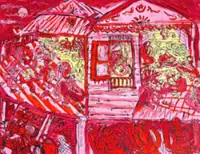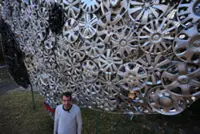‘You must know what you are creating. You are the creative mind. You don’t need to have an ‘eye’ for photography, there is no such rule. It’s not about the camera and how many rolls you take,’ says Peris. Photo: The Star/Yap Chee Hong
Eric Peris is a well-spoken and slender man of 84-years old and has spent his life making photographs (black and white photographs exclusively) and viewers can get a glimpse of the vast amount of work that he has produced at the National Art Gallery in Kuala Lumpur which is currently holding the year-long “Eric Peris Archive Project” exhibition (until May 2024).
Tomorrow (Nov 30) will see the public launch (3.30pm) of the exhibition (walk-in, free admission), which also includes the talk "Alchemy Of Light" by Peris at the National Art Gallery auditorium at 2pm.





